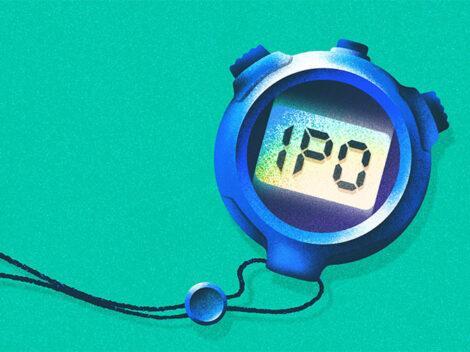This post was written by Kyle Poyar of OpenView, an expansion-stage venture firm based in Boston.
More than 60 percent of startups stall in their fundraising, according to an in-depth analysis of startup survival rates by Crunchbase News.
In their extensive study, the research firm followed a cohort of 15,600 U.S.-based tech startups founded between 2003 and 2013. Of the cohort the Crunchbase News study tracked, they found that fewer than one in five venture-backed companies exit via M&A.
Follow Crunchbase News on Twitter
While there was not one single round when companies stalled out, Crunchbase News notes that it was much harder to raise a Series A than the subsequent B (contrary to the phrase “Series B crunch”). Given recent fundraising trends, Crunchbase’s data may even be understating how difficult it is for startups to break through.
Seed and Series A deal volume is declining at the same time average round size is in the midst of an upswing, according to other Crunchbase News reporting. With larger seed rounds, startups have enough runway to demonstrate traction. That allows investors to bet bigger, earlier, and with higher conviction. The result is a flight to quality: the best performing startups are raising huge sums of money in extremely competitive fundraises at record-breaking pre-money valuations.
Series A Is The New Series B
So what does it take to raise your next round in 2018?
To find out, we combed through data from our 2018 Expansion SaaS Benchmarks. Our dataset covered 420 companies across all stages of growth from Seed to Series D. It spanned across geographies with significant representation from North America (57 percent of participants), Europe (20 percent), and Canada (12 percent).
There were a few table stakes criteria to attracting venture funding. The following metrics do not materially change from Series A through Series D rounds:
- Recurring revenue: Subscription revenue almost always accounts for 80 percent or more of total ARR.
- Healthy unit economics: Customer acquisition cost (CAC) payback periods are 12 months on average and range from 6-18 months (although CAC payback does increase in Series D rounds).
- Sticky products: Customer retention is 85-90 percent on average, and it is almost always above 80 percent.
- In-account growth: Net dollar retention (NDR) is generally 100 percent or above with best-in-class companies showing north of 115 percent NDR.
Now let’s deep dive into each round.
Series A
Less than half of seed-funded startups actually go on to raise a Series A round (42 percent), according to Crunchbase News. Given the increase in seed-stage deal sizes, and the trend of splitting seed funding into multiple different rounds, companies are more mature when they go to raise their Series A. Those that recently raised a Series A in our survey already had $1-4M in ARR, much larger in scale than what is traditionally thought of as a Series A.
These companies aren’t growing as fast as is typically expected. Average growth rates were only 80-180 percent YoY. Anecdotally, many Series A investors don’t get excited unless a startup is growing at 200 percent or more (as is backed up by a recent Series A and B investor survey run by Point Nine Capital). This either indicates that slower growing companies are able to find capital from non-traditional investors (such as corporate venture arms or alternative growth financing) or that investors have lowered their standards in recent deals.
There is also already a major distinction between top performing companies compared to everyone else. The companies that have reached $1.5M-$2M in ARR and are growing 3x or faster are able to raise $15-20M Series A rounds, which would traditionally be reserved for a Series B.

Series B
26 percent of seed-funded companies ultimately go on to reach a Series B. Successful companies are firmly in the expansion stage at this point. They have demonstrated product-market fit, shown signs of repeatability, and have started to build an efficient go-to-market engine. The name of the game is to scale as quickly and efficiently as possible. In other words, it’s time to pour buckets of cash into sales and marketing.
We actually see an acceleration in growth rates among Series B companies as compared to Series A, averaging between 125-175 percent YoY growth. At this stage, companies increase their sales and marketing spend to between 50-75 percent of their ARR and see burn rates rise to $300k-500k per month.
A word of caution: As you pour cash into sales and marketing, carefully track the return on your investment and where you’re wasting money. Doing so requires defining your leading indicators that predict the future success of your sales team such as time to first deal, time to quota, and average quota attainment. It also means that you should be using these indicators to optimize existing practices before layering in new reps or new channels. (For more advice, check out OpenView partner Liz Cain’s insights on moving from benchmarks to action.)

Series C
At Series C, investors are looking for continued growth at scale. This round is difficult to reach: only 16 percent of seed funded companies in the Crunchbase News study were able to raise a Series C round.
Growth rates remain elevated during this period (80-150 percent), although they start to slow down on average compared to Series B. Sales and marketing spend stays high as well, leading to burn rates of $450k-900k per month.
It’s especially important to maximize existing customers during this period, as average net dollar retention declines from 105 percent to 99 percent. Make sure that product, pricing, and sales incentives accommodate upsell paths for ongoing expansion. As you build new products, pay careful attention to how you’ll monetize those products from your install base.

Series D or later
At Series D and beyond, the ranks significantly thin out. Just six percent of seed-funded companies make it this far.
Growth at all costs only works for so long and growth will eventually slow as a company reaches scale. That starts to show up at Series C and continues into Series D, with average growth rates decelerating to 60-93 percent YoY.
At this point, it becomes important to start evaluating growth in the context of profitability and to monitor your Rule of 40. Companies start to throttle back on their sales and marketing spend at this stage, reducing their monthly burn in the process to $300k-750k per month. This helps these companies create optionality for potential exit opportunities, whether that be an IPO, acquisition by a large strategic, or increasingly, a PE buyout.

What To Take Away
Looking at our investment pipeline, we don’t see these trends slowing down. In 2019, expect to see even more bifurcation and VCs continuing to bet big on standout companies.
We hope this information and more included in our 2018 Expansion SaaS Benchmarks provides you with a clearer understanding of what it takes to raise your next round, when and how to go about doing so. You can find the full report complete with statistics on fundraising, diversity, pricing, and more, here.
This post was written by Kyle Poyar of OpenView, an expansion-stage venture firm based in Boston. Per OpenView, “Kyle helps OpenView’s portfolio companies accelerate top-line growth through deep insights into their market landscape and customers. He leads segmentation, positioning, channel/partner strategy, new market entry and packaging/pricing initiatives, partnering closely with portfolio leadership teams. He also covers OpenView’s SaaS metrics and benchmarking research.”
Illustration: Li-Anne Dias

Stay up to date with recent funding rounds, acquisitions, and more with the Crunchbase Daily.






![Illustration of a guy watering plants with a blocked hose - Global [Dom Guzman]](https://news.crunchbase.com/wp-content/uploads/quarterly-global-3-300x168.jpg)
67.1K Followers